
By Brent Bellamy, Architect + Creative Director
Originally published in the Winnipeg Free Press
Modern architecture was born out of a global health crisis. With tuberculosis crippling cities in Europe and North America in the early 20th century, gleaming white medical facilities called sanitoriums were designed to provide patients access to sunlight and fresh air, the only known treatment for the disease. This inspired architects to use the same ideas to promote mental and physical health in all new buildings.
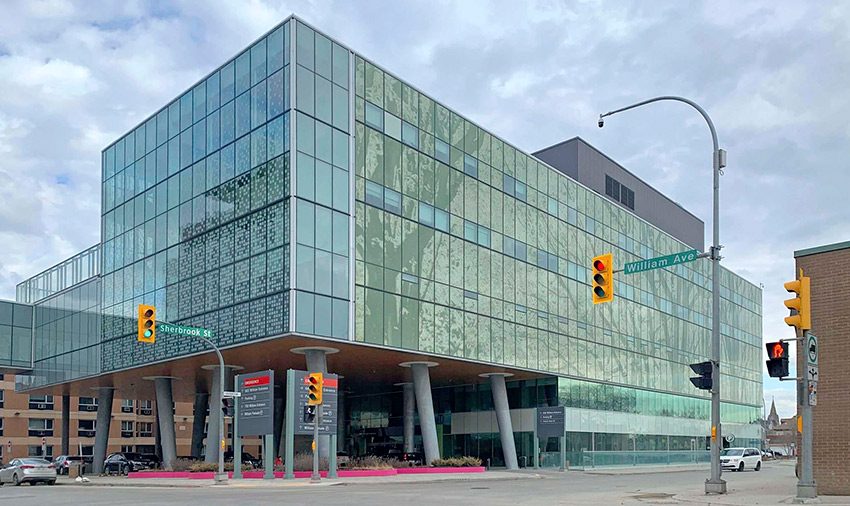 (BRENT BELLAMY PHOTO) The Women’s Hospital at Health Sciences Centre is an example of health-care architecture whose principles could inspire other building design.
(BRENT BELLAMY PHOTO) The Women’s Hospital at Health Sciences Centre is an example of health-care architecture whose principles could inspire other building design.
Air and light became viewed as a kind of medicine by Modernist architects, and every building type was a kind of health-care facility. From this grew the clean Modernist aesthetic of high ceilings and open volumes, large operable windows, easy-to-clean white surfaces, terraces, and flat roofs — perfect places to sunbathe. The disease had changed the way our world looks.
It is too early to predict how the world will change after we emerge from this pandemic, but as it did in the last century, architecture and design will likely play a central role in the evolution.
As an immediate response to the current crisis, architects can once again look to health-care design for strategies that safeguard against bacteria and virus transmission. These approaches include a return to more non-porous surfaces in high-touch areas, making them easier to clean and sanitize.
Designers can also work with coatings, paints, fabrics, flooring, wall coverings and other building finishes that are antimicrobial, or less prone to allowing bacteria to congregate and multiply. Certain stainless steels, copper and alloys such as bronze or brass are inherently antimicrobial, making them more resistant to pathogen transfer. "Touchless" technology can help with reducing virus spread by incorporating such things as automatic doors and sinks, voice-activated elevators, hands-free light switches and temperature controls. Less technical touch-reducing solutions include designing washrooms in public buildings so they don’t need doors, and replacing round doorknobs that require a full grasp with lever openers.
"Touchless" technology can help with reducing virus spread by incorporating such things as automatic doors and sinks, voice-activated elevators, hands-free light switches and temperature controls. Less technical touch-reducing solutions include designing washrooms in public buildings so they don’t need doors, and replacing round doorknobs that require a full grasp with lever openers.
This and other high-tech solutions such as medical screening technologies to protect people at airports, sporting events and other large gatherings, will likely see accelerated development and incorporation into everyday architecture in the coming years.
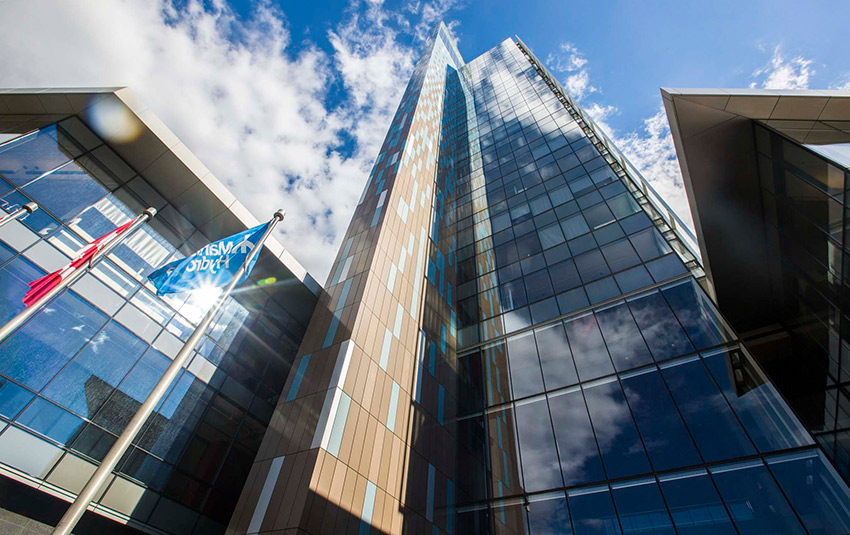 Manitoba Hydro Place on Portage Avenue uses a dual curtain of windows to provide natural light and dimmable, programmable lighting when needed, while allowing employees control over ventilation provided through the use of a solar chimney that draws air up and out of the building. (Mikaela MacKenzie / Winnipeg Free Press files)
Manitoba Hydro Place on Portage Avenue uses a dual curtain of windows to provide natural light and dimmable, programmable lighting when needed, while allowing employees control over ventilation provided through the use of a solar chimney that draws air up and out of the building. (Mikaela MacKenzie / Winnipeg Free Press files)
It is unlikely that many buildings will be designed specifically to accommodate the worst-case scenario of a global pandemic, but the COVID-19 outbreak has demonstrated the importance of adaptability in our buildings. Rooms in our homes have suddenly become offices, hospital parkades are now testing centres, and school gymnasiums are becoming temporary intensive care units.
Over the long term, the role of architecture in the new reality of a post-COVID-19 world might take inspiration from the Modernists of a century ago. A renewed focus on the ability for the built environment to affect our physical and mental health would be like preventive medicine to make us stronger and more resilient in times of crisis.
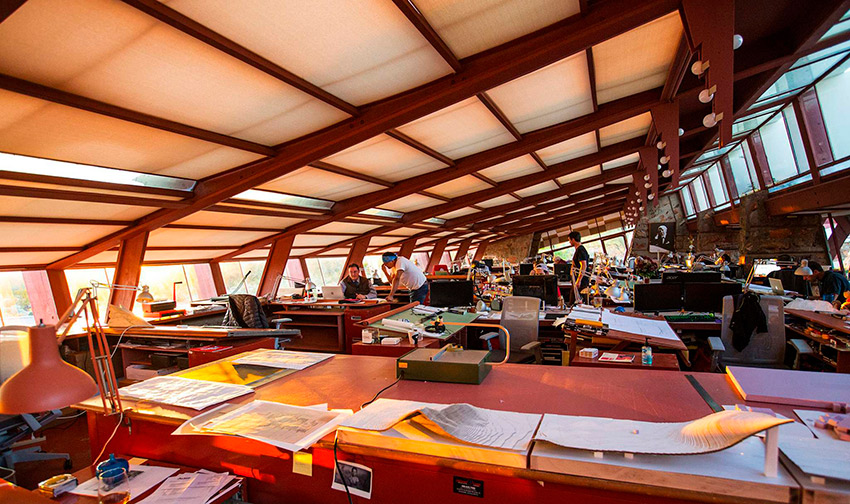 In the drafting studio at the now-closed architecture school at Taliesin West, a Frank Lloyd Wright design, windows along both sides of the vaulted ceiling and at the ends of the space allow for natural light yet their positioning helps reduce the transfer of heat. (Mike Siegel /Seattle Times)
In the drafting studio at the now-closed architecture school at Taliesin West, a Frank Lloyd Wright design, windows along both sides of the vaulted ceiling and at the ends of the space allow for natural light yet their positioning helps reduce the transfer of heat. (Mike Siegel /Seattle Times)
Once again, we can look to health-care design for inspiration. An evolving theory called salutogenic design has been emerging from hospital architecture. Simply put, salutogenic design aims to build structures that make people healthier and happier. Like the Modernist architecture of the 20th century, it returns to the use of sunlight, natural ventilation and views to nature as ways to improve health and well-being.
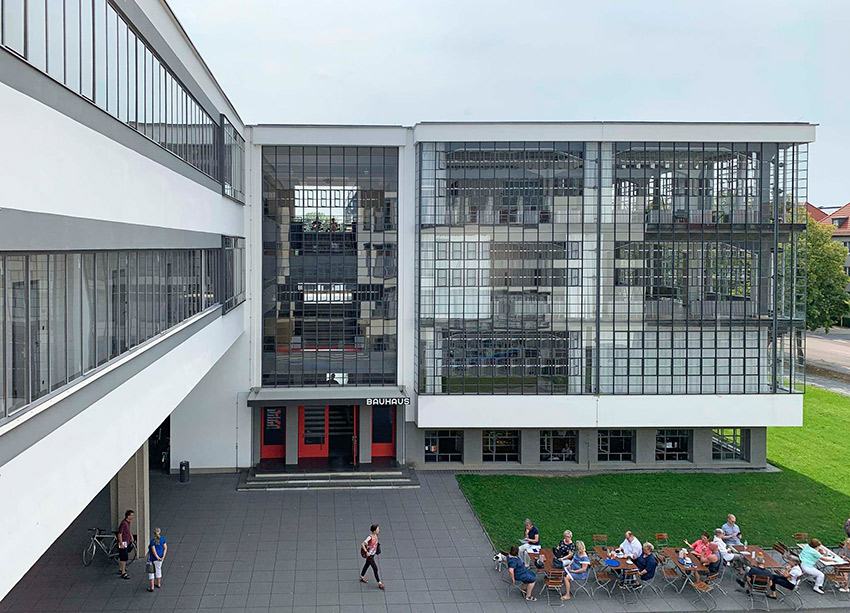 The Bauhaus was an art and architecture school that was instrumental in developing the Modernist style of architecture. The building featured large, operable windows and a view of nature.
The Bauhaus was an art and architecture school that was instrumental in developing the Modernist style of architecture. The building featured large, operable windows and a view of nature.
In health-care settings, studies have shown that access to these elements results in significant reductions in a patient’s average length of stay and need for medication. It has been found to lower stress levels and depression rates and promote faster recoveries.
On some level, these health effects can be realized in all building types if we promote similar design principles — large windows to allow the deep penetration of sunlight, providing views that connect people to their surroundings, and a move away from sealed buildings and mechanical air conditioning to allow natural ventilation with fresh air. Salutogenic design also promotes mental health through social cohesion and interaction, incorporating welcoming spaces for meeting and human connection, familiar spaces for orientation and comfort, and quiet spaces for focus and restoration.
Salutogenic design also promotes mental health through social cohesion and interaction, incorporating welcoming spaces for meeting and human connection, familiar spaces for orientation and comfort, and quiet spaces for focus and restoration.
Building planning can incorporate the salutogenic approach by encouraging building users to engage in a more active lifestyle. A large central staircase might invite people to avoid the elevator. Showers and change rooms might promote biking or walking. In office space, strategically locating washrooms, copy rooms and lunchrooms can encourage people to make short walks throughout the day.
Building location and exterior design can create interesting and welcoming pedestrian environments that invite people to walk more.
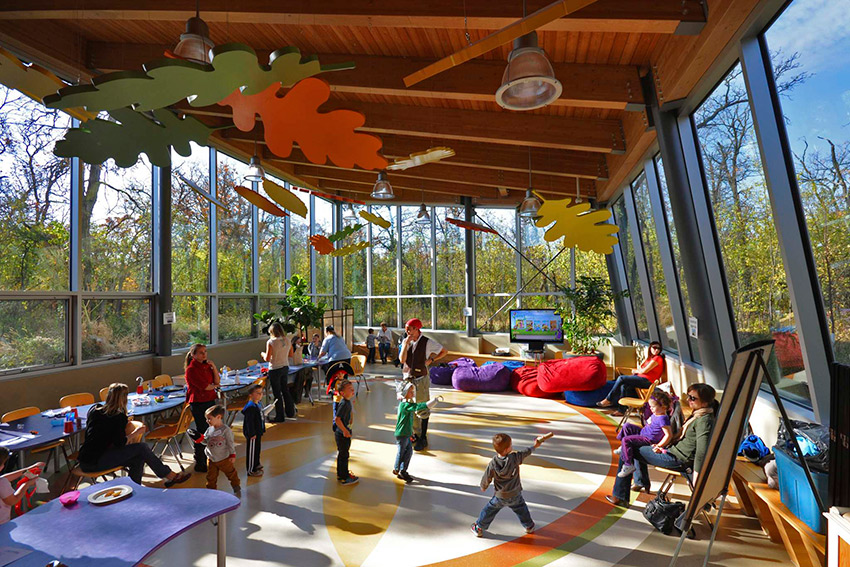
The Qualico Family Centre at Assiniboine Park is a good example of healthful design, with operable windows, cross-ventilation and a view to nature outside.
By increasing the opportunities for physical mobility and exercise, such design decisions can help prevent chronic health conditions such as obesity, diabetes and heart disease, improving our immune systems and our ability to meet the challenge of a public crisis.
Architecture has the ability to reshape the world we live in after the COVID-19 pandemic. As architects did a century ago, we can learn from health-care design and incorporate new ideas into our everyday architecture, to promote mental and physical well-being, protect us from pathogen spread, and prepare us for the challenges we will face in the future.
Brent Bellamy is creative director at Number TEN Architectural Group.